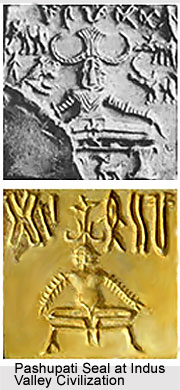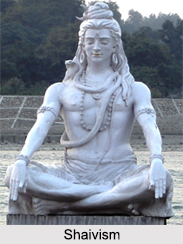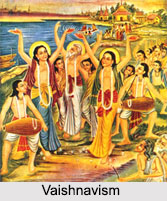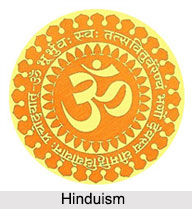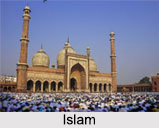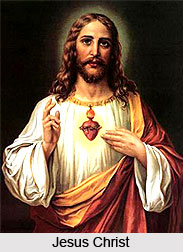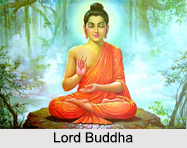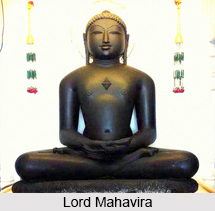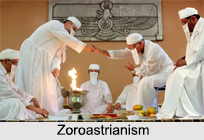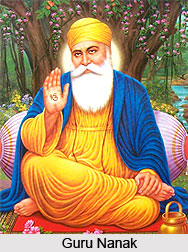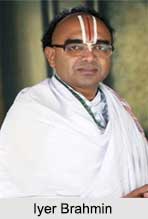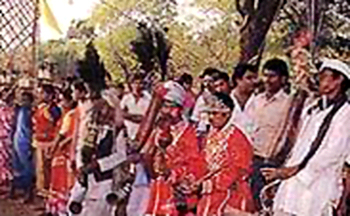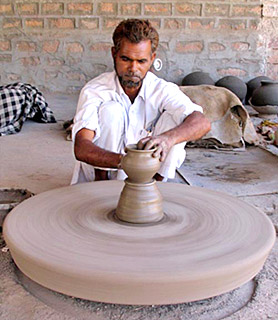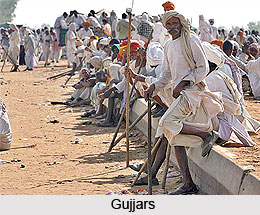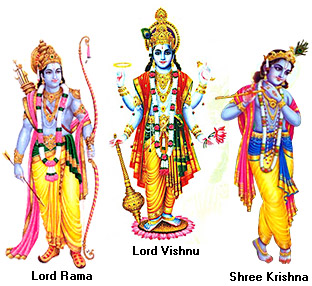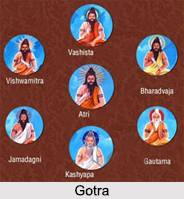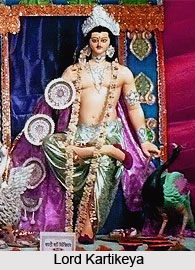 The worship of Lord Kartikeya is carried on through out the country, particularly in South India, by Tamil Hindus, who popularly refer to him as Murugan. Tamil people also refer to him as, Thamizh Kaduvul, meaning God of Tamil. Moreover, Worship of Lord Kartikeya is carried on several parts of the world like, Malaysia, Singapore, Sri Lanka, Mauritius and Reunion Island. People in Penang and Kuala Lumpur, in Malaysia also worship Lord Kartikeya, during Thaipusam. Durga Puja in West Bengal, worship of Lord Kartikeya is conducted along with his mother Parvati and siblings Ganesha, Lakshmi and Saraswati.
The worship of Lord Kartikeya is carried on through out the country, particularly in South India, by Tamil Hindus, who popularly refer to him as Murugan. Tamil people also refer to him as, Thamizh Kaduvul, meaning God of Tamil. Moreover, Worship of Lord Kartikeya is carried on several parts of the world like, Malaysia, Singapore, Sri Lanka, Mauritius and Reunion Island. People in Penang and Kuala Lumpur, in Malaysia also worship Lord Kartikeya, during Thaipusam. Durga Puja in West Bengal, worship of Lord Kartikeya is conducted along with his mother Parvati and siblings Ganesha, Lakshmi and Saraswati.
Worship of Lord Kartikeya in History
According to Sanskrit literature, worship of Lord Kartikeya, dates back to the 1st millennium BCE. Accounts of the deity are given in Sanskrit works such as Kathasaritsagara and Kalidasa`s Kumaarasambhavam. The Kushanas, a republican clan of Punjab, utilised coins that beared images of Kartikeya. He was also venerated by the Ikshvakus and the Guptas. The worship of Kartikeya was amongst the 6 principal sects of Hinduism during the era of Adi Shankara. Presence of Lord Kartikeya was also prevalent during the Gupta age. Skandagupta and Kumaragupta, two kings of the Gupta Empire, were named after Kartikeya. He is also depicted in various Gupta sculptures and the caves of Ellora and Elephanta.
Moreover, there is extensive mention of Lord Kartikeya in Sangam Tamil literature. One of the earliest Sangam literary works, Tolkappiyam, created between 3rd century BCE and 5th century CE, also described Kartikeya with intrinsic details. According to the Tirumurugarruppatai, a deeply devotional poem, around 400-450 AD, Kartikeya was the dominating deity the Kurinci region. In most Lord Shiva and Parvati temples in Tamil Nadu, Lord Kartikeya is mounted on the left side of the central idol. Sangam Literature describes Kartikeya as a nature spirit, revered with animal sacrifices. The worship of Lord Kartikeya was generally conducted in forested areas or in open fields, with no specific associated structure. The various rituals were practiced like, Veriyaattu, a type of ritual-trance-dancing, which is still forms a part of worship of Lord Kartikeya in Tamil Nadu.
Archaeological evidence of relics and pottery in different regions in Tamil Nadu, such as Adichanallur, had ideographic inscriptions of him and indicate that worship of Lord Kartikeya was widespread even during 10th century B.C. Lord Kartikeya is also linked with the Indus Valley God Ahmuvan.
Worship of Lord Kartikeya in South India
In Tamil Nadu, Kartikeya has been most admired with all classes of society from the Sangam period. Here, he is known by many names like Senthil, Arumuga, Skanda, Maal-Marugan, Guha and the most popular Murugan. Worship of Lord Kartikeya takes all over the Tamil year. There is a six day stage of fast and prayer during Skanda Shasti, which is in the Tamil month of Aippasi. Murugan is venerated at Thaipusam, celebrated by Tamil communities during the full moon, in the Tamil month Thai. This honours the day when Kartikeya received a lance or Vel from his mother, to destroy the Asuras.
The full moon in the Tamil month of Karthigai, known as Thirukarthigai, denotes his birth.Every Tuesday, during the Tamil month of Adi, is also devoted to the worship of Lord Kartikeya. Lord Kartikeya is the chief deity of the Thiyyas in northern Kerala. Worship of Lord Kartikeya is done with highest dedication in Dakshina Kannada and Udupi, in Karnataka. The ritual of nagaradhane is exclusive to this region.
Worship of Lord Kartikeya in North India
From the ancient period, Kartikeya was very popular through out India. But worship of Lord Kartikeya recoiled, since the Middle Ages, in North India. Nowadays, veneration of the deity is almost non-existent, except for Haryana. The Kartikeya Temple in Pehowa of Haryana, is rather popular and devotees flock to the temple through out the year. But the temple is most renowned as women are not allowed in the premises of the temple as the shrine adores the Brahmachari form of Kartikeya.
Remnants of earlier worship of Lord Kartikeya can be evidenced at the temple of Achaleshwar, close to Batala city, in Punjab and Skanda temple in Pune, Maharashtra. The Kartik swami Temple in Chamoli district of Uttarakhand is also popular for worship of Lord Kartikeya. During the month of June, a Yagya is conducted for 11 days, to please the god.
Worship of Lord Kartikeya in East India
Lord Kartikeya is worshipped in full bloom during the Durga Puja festival all throughout Kolkata and West Bengal. Kartikeya is revered along with Goddess Durga and Ganesha, Lakshmi and Saraswati. Detailed rituals are conducted during the month of "Kartik". The "Kartik Puja" is done in many households across the state. But recently the trend is fading and usually couples wishing to have a male new born bay worship Lord Kartikeya.
There is another tradition amongst the Bengalis that idols and images of Lord Kartikeya are secretly put in the premises of houses of people who are either recently married or are expecting a child. The deity is also linked with the Babu culture that dominated early Kolkata. Thus several traditional and old Bengali paintings portray Kartikeya dressed in traditional Bengali attire.
Lord Kartikeya, the God of War and Victory and the son of Lord Shiva and Parvati, is ardently worshipped by numerous devotees through out the nation, particularly in Tamil Nadu.
